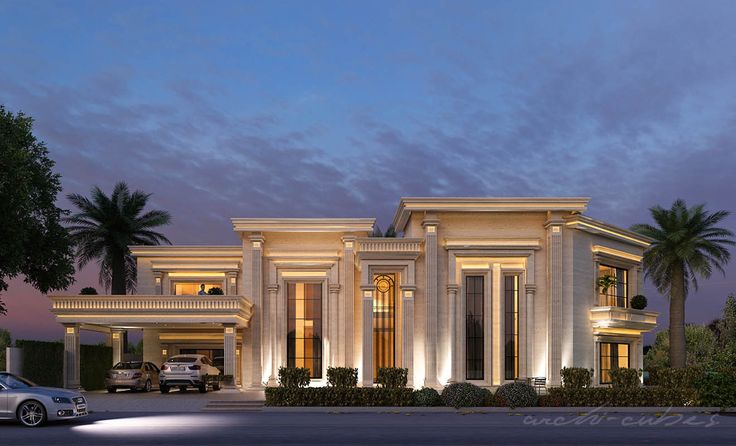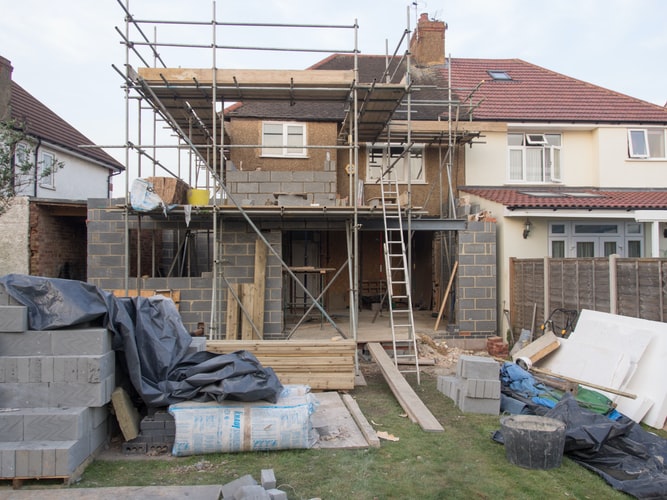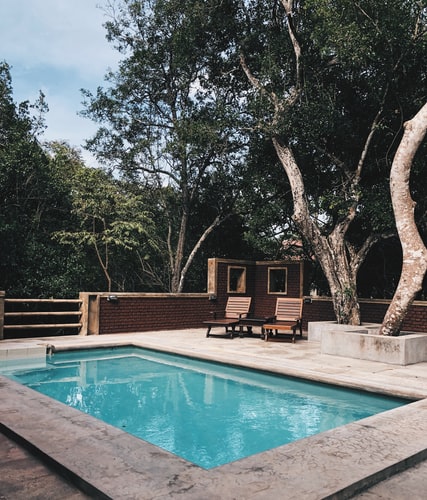Construction
Famous Architects Of Pakistan: A Comprehensive List

Architecture is one of the most popular and prestigiousfields in the world, and it’s no surprise that talented architects from Pakistan have made a name for themselves. In this blog post, we will take a look at some most famous architects of Pakistan and what makes their work stand out from the rest. From Feroz Khan to Muhammad Ikbal Ali, read on to learn about some of Pakistan’s most celebrated architects.
Mohammad Asif
Mohammad Asif is one of Pakistan’s most renowned architects. He has designed many impressive buildings, such as the Jinnah International Airport and the Pakistan Museum of Modern Art. Mohammad Asif was born in Karachi in 1949. After completing his undergraduate studies at the Islamic University of Madinah, he moved to London to study architecture at the Architectural Association School of Architecture. Upon returning to Pakistan in 1976, he established his own architectural practice. Mohammad Asif has received several awards for his work, including the Pritzker Prize in 2001. He is also a member of the Royal Institute of British Architects (RIBA).
Zahoor ul Haq
Zahoor ul Haq is one of the most celebrated Architects of Pakistan. He has designed many iconic buildings in various parts of the country. Here is a list of some of his famous works:
1) The National Assembly Building, Islamabad: This is one of Zahoor ul Haq’s most iconic and recognisable designs. The building was officially inaugurated in October 2004.
2) The Lahore Fort: Zahoor ul Haq was instrumental in designing this iconic landmark, which is now a UNESCO World Heritage Site. The fort was completed in 1998 and is located in the city of Lahore.
3) Karachi Press Club: This building was commissioned by the Karachi Press Club in 1972 and was designed by Zahoor ul Haq. It has since been renovated and expanded several times.
4) Faisal Mosque, Islamabad: This mosque was completed in 1983 and is situated on a hilltop near Islamabad’s Rawalpindi district. It is considered to be one of Pakistan’s finest architectural achievements.
Fazal Sheikh
Fazal Sheikh is a renowned Pakistani architect who has designed many iconic structures across the country, such as the Pearl-Qatar Centre in Islamabad, the Lahore Fort and Minar-e-Pakistan in Karachi, and the Faisal Mosque in Islamabad. His works have been featured in several magazines and newspapers, and he has also won several awards for his achievements.
Sheikh was born on December 16, 1941, in Sialkot, Punjab province of British India (now Pakistan). He started his career as a civil engineer before switching to architecture in 1973. He established his own firm, Fazal Sheikh Architects Limited, in 1984. Since then, he has designed over 400 buildings across Pakistan, including hospitals and schools. Some of his other notable projects include the Liaquat National University in Karachi (1995), the Lahore Fort (1996), and the ISI Headquarters (2007).
Sheikh has received several awards throughout his career, including the Sitara-i-Imtiaz (Military) Award from President Pervez Musharraf in 2004, the Sharif Gold Medal from Prime Minister Nawaz Sharif in 2018, and the Pride of Performance Award from President Mamnoon Hussain in 2019. He is also a member of several professional organizations, such as the Pakistan Academy of Arts and Sciences and The Institution of Engineers Pakistan.
Nauman Ahmed Khan
Nauman Ahmed Khan was born in 1927 in the town of Mianwali, Punjab. He was educated at the Government College of Arts, Lahore and the University of Cambridge, where he received his architecture degree in 1952. After completing his studies, Khan returned to Pakistan and began working on a number of high-profile projects, including the Education Ministry Building in Islamabad and the Hyatt Regency Hotel in Karachi. In 1968, Khan was awarded the prestigious Pritzker Prize for his design of the Jinnah International Airport in Karachi. Throughout his career, Khan has been highly influential both within Pakistan and internationally, and is considered one of Pakistan’s most celebrated architects.
Alamgir Mohmand
Alamgir Mohmand is a renowned Pakistani architect. He has designed a number of notable buildings, including the University of Karachi and the Pakistan International Airlines (PIA) headquarters in Islamabad. Mohmand was born in Lahore in 1933, and studied at the prestigious National College of Arts in Karachi. After graduation, he worked for several years as a civil servant before founding his own firm in 1969. Mohmand’s work often incorporates traditional Islamic elements into his designs, making him one of Pakistan’s most distinctive architects. He has been awarded several prestigious awards, including the Padma Bhushan award from the Indian government and the Gold Medal from the Royal Institute of British Architects (RIBA). Mohmand died in 2002 at the age of 73.
Tariq Suhail
Tariq Suhail is one of the most renowned architects in Pakistan. He has worked on a wide range of projects, from private residences to large-scale public buildings.
Below is a list of some of the most notable projects Tariq Suhail has been involved in:
- The Sindh Governor’s House, Karachi
- Jinnah International Airport Terminal 2, Karachi
- Benazir Bhutto International Airport Terminal 3, Islamabad
- Bahria Town, Karachi
- Gulberg housing scheme, Lahore
- Sheikhupura Arts and Culture Centre, Sheikhupura
- Shaheed Minar complex, Islamabad
Muhammad Latif
Muhammad Latif (born on April 13, 1939), is a Pakistani architect and urban planner who has been called the “father of Pakistani architecture”. He is particularly known for his work in the field of urban planning and architecture. Latif has also taught at the University of Karachi since 1986.
Latif was born on April 13, 1939, in Lahore, Punjab, British India. He received his early education at Model School and College in Lahore. After completing his undergraduate studies at the University of Cambridge in England, he returned to Pakistan to begin his professional career in 1962.
Latif’s early architectural projects include a number of hospitals and educational institutions in Pakistan. In the 1970s and 1980s, Latif shifted his focus to urban planning and architecture. His notable works during this time include the development of Islamabad’s CBD district (1980-1986) and the redevelopment of Karachi’s Saddar area (1984-1988).
Latif has also taught at the University of Karachi since 1986. In 2005, he was awarded an honorary doctorate by the University of Karachi for his contributions to Pakistani architecture and urban planning.
Construction
Mueller Settlement: Resolving Legal Matters with Precision

Learn all there is to know about legal settlements with Mueller Settlement, a thorough resource. Learn more about the steps, important people, and how it affected businesses and individuals. Understand from examples and the advice of experts.
Introduction:
The Mueller Settlement stands out as a symbol of justice and efficiency as it embarks on the complex path of judicial settlements. Its historical relevance, procedural subtleties, and influence on our legal environment are illuminated by this article’s examination of the process’s essential features.
Understanding Mueller Settlement: Basics of Mueller Settlement
Fundamentally, the Mueller Settlement is a method for resolving legal disputes that aims to expedite processes rather than resort to drawn-out court fights. As a kind of alternative conflict resolution, it encourages parties to work together rather than against one another.
Importance of Legal Resolutions: The Significance of Mueller Settlement
Mueller Settlement is a major participant in the legal field in a world where time is crucial. Efficiently resolving disagreements not only helps save time and resources but also promotes fairness among all parties concerned.
Key Players in Mueller Settlement: Legal Entities Involved
A number of legal bodies, including mediators and solicitors, are involved in navigating the intricacies of the Mueller Settlement. If you want to know how this process works, you have to know what they do.
Historical Context: Mueller Settlement Over the Years
By looking at where Mueller Settlement came from, we can see how it changed throughout the years. There is a tight relationship between its origins in the shadows and its eventual rise to prominence as a fixture in court decisions.
Process of Mueller Settlement: Step-by-Step Guide
This section gives a road map for anyone seeking resolution outside of conventional court procedures by breaking down It process into understandable phases.
Common Misconceptions: Debunking Myths about Mueller Settlement
For a comprehensive understanding, it is vital to dispel misunderstandings surrounding It. A better understanding of its merits and shortcomings can be achieved by clearing up frequent misunderstandings.
Legal Implications: Impact on Legal Landscape
Beyond its impact on specific cases, It has shaped the whole legal system. To further understand its wider relevance, it is helpful to look at its legal ramifications.
Financial Ramifications: Monetary Aspects of Mueller Settlement
The monetary ramifications of It extend beyond the sphere of law. Businesses and individuals alike must have a firm grasp of the financial details in order to successfully traverse the settlement process.
Success Stories: Notable Cases Resolved
Highlighting success stories can demonstrate the efficacy of It. Actual instances of disagreements that were able to be resolved amicably demonstrate the efficacy of this other method.
Challenges and Criticisms: Controversies Surrounding Mueller Settlement
Difficulties are inherent in every procedure. By delving into the controversy and complaints around It, we can better understand its shortcomings and start talking about how to make it better.
The Role of Mediation: A Closer Look at Mediation in Settlements
Mediation plays an essential part in It. When examining the operation in this setting, one can see how mediation enables impartial and fair decisions.
Ethical Considerations: Ensuring Fairness and Justice
Integrity is paramount in It. To make sure that justice and fairness win out, this section dives into the process’s essential ethical aspects.
Benefits for Individuals and Corporations: How Mueller Settlement Affects Stakeholders
With It, both individuals and companies stand to gain. Examining these benefits in detail explains why this method is gaining popularity.
Case Studies: Real-Life Examples of Mueller Settlement
Practical illustrations are the most persuasive. By looking at real-life examples, we can see the many different kinds of disputes that It helped resolve.
Future Trends and Innovations: Evolving Practices in Legal Resolutions
It is subject to change in response to changes in the law. Here we take a look at some new developments in the field of legal resolutions that might have a significant impact in the future.
Comparison with Other Legal Processes: Contrasting Mueller Settlement with Litigation
Individuals can gain a more sophisticated understanding of the relative merits of regular litigation and It by comparing the two.
International Impact: Mueller Settlement on a Global Scale
It is global in scope. Analysing its international influence reveals that this process transcends geographical bounds.
Exploring Alternative Dispute Resolution: Options Beyond Mueller Settlement
Other than It, there are other ways to resolve disputes. Investigating these choices gives a comprehensive overview of the many methods for resolving conflicts.
Expert Opinions and Testimonials: Insights from Legal Experts
What Does the Jurisprudence Say? Acquiring the opinions and ideas of those knowledgeable in the subject enhances the article’s credibility.
Conclusion:
Finally, it is clear that It is a cornerstone of contemporary dispute settlement. It represents a sea change in our perspective on conflict resolution and has far-reaching consequences, from domestic issues to global arenas.
FAQ
Q: How long does It process usually take?
The length of It is determined on an individual basis. Its primary goal is the speedy resolution of conflicts, so its design prioritises efficiency.
Q: Are the decisions reached in It legally binding?
A: It provides a safe framework for dispute settlement, and judgements reached via it are legally binding.
Q: Can any type of dispute be resolved through It?
While It has successfully resolved many cases, very complicated criminal offences may require more conventional judicial processes.
Q: Is Mueller Settlement a cost-effective alternative to litigation?
No, in most cases. Due to the time and money saved compared to conventional litigation, It is frequently the better option.
Q: What role do mediators play in it?
Answer: A mediator is someone who does not take a position on either side of the dispute; rather, they serve as a neutral facilitator who helps the parties to an agreement.
Q: Can individuals represent themselves in it?
Yes, it is feasible; nevertheless, the procedure goes more smoothly with legal assistance because of the knowledge and experience that attorneys bring to the table.
Construction
Home Builders: Definition & How They Affect Us 2021

Definition: New home builders are companies that build single-family homes. They are an important contributor to the real estate market in general. In fact, the construction of new homes is one of the components of GDP, the economic production of the nation. The largest are the production builders. They buy acres of land and subdivide them into plots. They build houses based on model homes.
There are also many custom home builders. They are usually local or regional companies. They’ll sit down with a buyer to build a house to order. Please check out our site.
What New House Statistics Tell About the Economy?
Statistics on the construction of new homes are important economic indicators. That means you’ll be given information about the future of the housing market.
Here are the four most critical stages, what they tell you.
- Sales of new homes occur when the buyer signs the purchase agreement.
- Building or zoning permits are usually granted two months later. These statistics give you an early look at housing trends.
- The beginning of a new home is when the builder starts building the land, which usually happens right after the permit is granted. It usually takes six to nine months to build a new house.
- Completed, usually between nine and twelve months after the sale of the new house.
The U.S. Census features homes built in a new mixed-use building that combines commercial and residential uses. These often occur in downtown shopping districts that have first-floor stores and upstairs apartments. However, it excludes from its statistics the built houses that are:
- Collective houses, such as bedrooms, guest houses and apartments.
- Transitional rooms, such as hotels, motels and tourist courts.
- Prefabricated or mobile homes.
- Buildings that have been moved or relocated.
- New construction of homes in an existing structure.
- Publicly owned housing units. The exception is whether they are built by private developers who use partial public subsidies. The other exception is if they are then sold to local public housing authorities under HUD’s Turnkey program. (Source: New construction of the U.S. Census home)
How House builders contributed to the Rise and Bankruptcy of Housing
New house builders were severely affected by the recession. New housing completions recorded a historic low in 2010. Only 506,000 homes were built. That was 30% less than the 1. 7 million homes built at the height of the housing bubble in 2006.
It’s easy to see why some blame over-construction by new home builders for causing the housing bubble that led to the recession.
By August 2006, home prices had fallen for the first time in eleven years. The number of homes sold fell to 6.3 million, and inventory increased, in part thanks to new house builders.
Why didn’t they stop building? Most home builders are public companies. Profits must increase to increase stock prices. Investors in stocks would not reward the home builders they stopped building to avoid a bubble. So, to some extent, capitalism and free-market companies were partly guilty of the new domestic bubble.
Construction
How to Choose the Best Swimming Pool Building Company

Choosing the best pool construction company is not difficult if you know how to do it. You should take into account the different variables that influence when building a pool to avoid last minute surprises. From the beginning to the end of the work it is essential to have the best pool construction company. To ensure that the result meets your expectations always choose www.swimmingpoolcontractorsoahu.com.
Experience
When choosing the best pool building company the experience is the most important point to consider if you want to succeed. Carrying out such a work requires safety and commitment. Only a company with the necessary experience can provide you with the peace of mind to face such a work.
Building a water area on your land allows you to enjoy your home in its entire splendor. Don’t leave anything to improvisation. The experience is undeniable to get the pool of your dreams. By having an experienced company you will be securing the future of your work.
Sustainability
Talking about sustainability in the 21st century is an obligation. In the old days it was less considered but today it is essential.
Your new private pool must fulfill its function while still providing its grain of sand. The future depends on everyone and it is our job to bet on biodegradable materials.
You always have to choose the materials that best suit the terrain. Each work must be carried out with the necessary rigor and seriousness. The law is getting stricter and it’s vital to take it into account. By betting on sustainable materials you will be betting on a better future for all.
Modernity
The modernity of sports constructions is very important. The false belief that all pools are the same has made many wrong. Not all pools are the same, but ours are all quality. That’s our biggest concern. We want you to enjoy the latest technological advances to the fullest.
We have known from day one that we must keep up with the times. In the construction of swimming pools you have to follow that premise. Betting on technology and evolution will ensure longer life. Do not hesitate; the best pool construction company always looks for how to improve your works. Do not hesitate that betting on the best is the biggest guarantee you can find.
After-Sales Service
One of the points that some neglect and shouldn’t. Keep in mind that a good pool building company knows how to keep helping customers. Many neglect this point without considering that a good after-sales service makes all the difference. In the end it is about offering the customer the peace of mind of the job well done.
We value the importance of our customers with good after-sales service. From day one until forever. Your pool must fulfill its function to satisfy the customer. If your customer is satisfied you will recommend it to your friends and family. This advertising ensures that it continues to grow as a pool building company.
Conclusion
Choosing the best pool building company is vital to be able to build the pool of your dreams. A good after-sales service ensures a good follow-up once the work is finished. Sustainability and modernity give you the touch your future private pool needs. Don’t think about it anymore, we’re the best choice.
-

 Apps1 year ago
Apps1 year agoWhy is Everyone Talking About Hindi Keyboards?
-

 Social Media1 year ago
Social Media1 year agoWho is Rouba Saadeh?
-

 Apps1 year ago
Apps1 year agoThings you need to know about Marathi keyboard today
-

 Apps1 year ago
Apps1 year agoStuck with Your default Bangla keyboard? Isn’t it time for a change?
-

 Games1 year ago
Games1 year agoTop 7 Popular Puzzle and Card Games for Relaxing Your Brain on Mobile, Featuring Solitaire
-

 Social Media1 year ago
Social Media1 year agoMati Marroni Instagram Wiki (Model’s Age, Net Worth, Body Measurements, Marriage)
-

 Entertainment1 year ago
Entertainment1 year ago12 Online Streaming Sites that Serve as Best Alternatives to CouchTuner
-

 Entertainment1 year ago
Entertainment1 year agoMovierulz Website: Movierulzz 2021 Latest Movies on Movierulz.com
